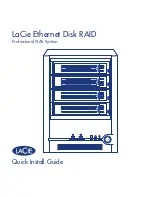
– 234 –
S-91A SPLITS - ACD
S-91A SPLITS - ACD
GENERAL DESCRIPTION
A Split is a basic building block of a call center and is generally thought to consist of a group of agents performing
a similar task, a prioritized queue for incoming callers and possibly a supervisor position to oversee the caller and
agent activity within the split. The supervisor may have a sophisticated statistics program available to monitor the
caller and agent activity which will provide both real-time as well as historical information.
Many features are provided on a per-split basis and applied equally to all agents in the split or all callers in the split’s
queue. Here is a brief summary of the features available for a split. Most of these are discussed in detail on their
respective pages and are included here for summary information only.
After ACD Call Mode
At the conclusion of each call an agent can be automatically either available or in wrap up mode depending on this
setting. Straightforward key presses at the agent instrument allows individual agents to override this feature on a
call-by-call basis.
Agent Queueing Options
An option exists where the agent’s preference levels can be checked in order to decide which agent should receive
the next incoming call. When preference levels are not being checked then the call will go to the longest waiting
agent. If preference levels are being checked then the agent with the highest preference level is located and if there
are more than one with the same preference level then the longest waiting one will be assigned the call.
The Agent preference level data for this feature is also used to decide the preference level of incoming ACD call
when using MULTI-SPLIT AGENT-ACD [M-90A] (Preference levels 1 through 99 (1>99) can be programmed us-
ing “PRIO” in ACDLOG command). Therefore, when MULTI-SPLIT AGENT [M-90] is used together with this
feature, there are the following conditions.
a) if there are no ACD calls waiting in the queue:
Agent Queueing Options is available for the ACD call to be routed to the split where
Agent Queueing Options is effective (when multiple splits are allowed for Agent Queueing Options,
the agent may have different preference level for each split).
b) if there are ACD calls waiting to be queued in multiple splits:
the agent handles the ACD call followed by MULTI-SPLIT AGENT function.
Analog Work Timeout
Analog positions within a split may utilize a different after-call-work timeout than digital station users.
Answer Mode
By default, agent phones may be setup for auto answer which provides zip tone and an automatic connection or man-
ual answer in which case the agent’s position will ring and the incoming call should be answered in the normal fash-
ion. Straightforward key presses at the agent instrument allows individual agents to override this feature on a call-
by-call basis.
Summary of Contents for SV8500
Page 1: ...FP85 104 S1 Data Programming Manual ACD NWA 041687 001 ISSUE 1 0...
Page 12: ...PL 6 This page is for your notes...
Page 130: ...114 A 31A ABANDONED CALL SEARCH ACD PROGRAMMING None...
Page 364: ...348 CHAPTER 6 This page is for your notes...
Page 409: ...Printed in Japan 0807 010...
Page 410: ......
















































